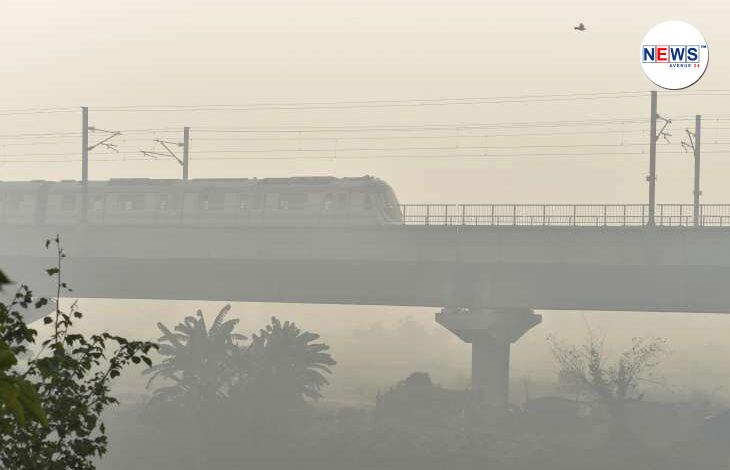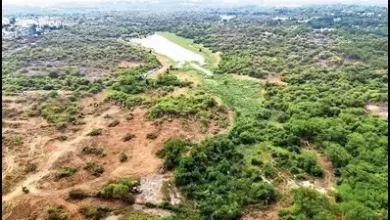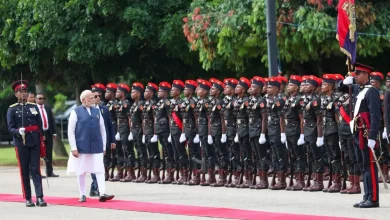
Delhi weather update: Severe cold wave, dense fog in NCR; over 30 trains running late | DETAILS
Delhi weather update: Airport authorities in an advisory to the passengers on Saturday said that several procedures have been undertaken at the airport to counter the menace of low visibility at the airport.
Delhi weather update: A thick layer of fog engulfed Delhi-NCR on Saturday (January 7). National capital recorded a continuous severe cold wave like situation today.
Safdarjung recorded a minimum temperature of 2.2 degrees Celsius. A minimum temperature of 2 degrees Celsius was recorded at Lodhi Road. These are the lowest temperatures in the respective areas this season, informed IMD officials.
Delhi | Severe cold wave and fog conditions continue to prevail in the national capital. Visuals from Akshardham pic.twitter.com/nxEqDnCmac
— ANI (@ANI) January 7, 2023
Also, a dense layer of fog persisted over northwest India, and adjoining central and eastern parts of the country, hitting road and rail traffic movement.
Trains STATUS:
Around 32 trains are running late in the Northern Railway region due to fog.
32 trains running late in the Northern Railway region due to fog, as per the latest information on 7th January. pic.twitter.com/yD5eQnCpGe
— ANI (@ANI) January 7, 2023
Delhi airport advisory/ Flights delayed:
Around 34 domestic departure flights from Delhi airport delayed due to bad weather and other related issues. Over 12 arrival flights are delayed at the airport from different destinations.
Indira Gandhi International Airport (IGI), Delhi has issued an advisory and launched procedures in view of low visibility conditions caused due to fog. Airport authorities in an advisory to the passengers on Saturday said that several procedures have been undertaken at the airport to counter the menace of low visibility at the airport.
They said that all flight operations are presently normal.However, the Airport has also requested the passengers to contact the concerned airline for the latest information about the flight, authorities said.Several flights were delayed on Friday due to fog and low visibility conditions.
Air quality in Delhi-NCR at severe level:
With temperatures falling down, the air quality in Delhi-NCR has reached the severe category, forcing the government to reimpose the Stage-III of GRAP (Graded Response Action Plan) and ban construction works in entire NCR except for Railways, Delhi Metro and some other departments.
The air quality index (AQI) at various hotspots in Delhi-NCR reached severe category, including in Mathura Road (440), Patparganj (448), Nehru Nagar (462), Sahibabad (452) and Noida Sector-62 (426). The Central Pollution Control Board (CPCB) has ordered to reinforce strict ban on construction and demolition activities in the entire NCR and a nine-point action plan as per Stage-III of GRAP became applicable with immediate effect from Friday.
This is in addition to the preventive and restrictive actions under Stage-I and Stage-II of GRAP, which are already in place. Delhi’s overall AQI spiked to 438 on Friday, as per the AQI bulletin provided by the CPCB.
The nine-point action plan includes steps to be implemented and ensured by different agencies and the pollution control boards of NCR, including the Delhi Pollution Control Committee.
Delhi power demand ‘RECORD HIGH’:
Delhi’s peak winter power demand rose to a record 5,526 MW on Friday as a numbing cold wave swept the national capital, officials said. An official of the BSES said its power distribution companies are geared to ensure adequate availability for its around 47 lakh consumers (around two crore residents) during the winter months.
“According to data, Delhi’s peak power demand on Friday clocked 5,526 MW at 10.58 am, highest-ever recorded in the national capital during winter months. This is the third day in a row that Delhi’s peak power demand has crossed the 5,000 MW mark,” the BSES official said.
The power demand had peaked at 5,104 MW last year and 5,021 MW in 2020. The peak winter power demand in BRPL and BYPL areas had reached 2,140 MW and 1,122 MW, respectively, during the last winter.
The backbone of BSES’ power-supply arrangements during the winter months includes long-term agreements from power-plants; including Hydro and Delhi-based gas-fuelled generating stations. Additionally, the BSES is also receiving 840 MW of solar power from Solar Energy Corporation of India, 439 MW of wind power, around 25 MW from waste-to-energy plants.
It is also being helped by more than 127 MW of solar power installed on roof-tops in south, west, east and central Delhi. In case of any contingency, BSES discoms will buy short-term power from the exchange which is available at economical rates. Advanced load-forecasting statistical and modelling techniques will help them accurately forecast the power demand.
Weather warning -KNOW ABOUT COLOUR CODES:
The India Meteorological Department (IMD) uses four colour codes for weather warnings:
- Green (no action needed)
- Yellow (watch and stay updated)
- Orange (be prepared)
- Red (take action)
A severe cold wave is when the minimum temperature dips to two degrees Celsius or the departure from the normal is more than 6.4 degrees. A cold day is when the minimum temperature is less than or equal to 10 degrees Celsius below the normal and the maximum temperature is at least 4.5 degrees below the normal. A severe cold day is when the maximum is 6.5 degrees Celsius or more below the normal.
(With agencies inputs)
News Sources – India Tv News





